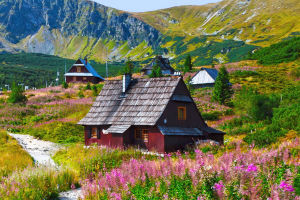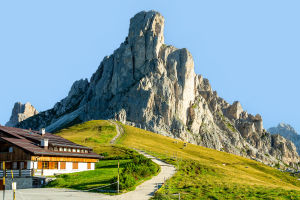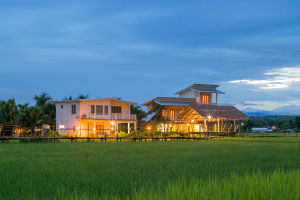Patagonia's Wild Side
You don't "do" Patagonia like a checklist. You endure it, fall in love with it, wrestle with the winds, and come out with a story you won't stop telling for years.
If you've ever seen photos of turquoise glaciers or hikers standing alone in vast, rugged wilderness—trust me, those don't even come close.
Patagonia is not filtered beauty. It's wild, hard, and absolutely worth it.
But the biggest mistake most travelers make? Underestimating the logistics. The distances are huge, the weather is chaotic, and the adventure is only fun if you plan smart. So let's talk specifics—not just what to see, but how to do Patagonia without getting overwhelmed.
1. Torres del Paine Isn't a Day Trip
This is Patagonia's crown jewel—and it's no joke. Located in Chilean Patagonia, Torres del Paine National Park is known for its jagged peaks, milky blue lakes, and the iconic W Trek.
✔ Entry fee: $35 for foreigners (valid for 3 days).
✔ Best time to go: Late November to early March (Patagonian summer).
✔ Closest base town: Puerto Natales, a 2-hour bus ride away. Buses cost ~$12 one-way.
✔ Opening hours: Park opens at 7:30 a.m. and closes at 8:30 p.m.
Pro Tip: If you're not doing a multi-day trek, don't try to see everything. Do a full-day hike to Mirador Base Torres (~8 hours round trip). You'll still earn your Patagonia badge.
2. Don't Trust the Weather Apps
There's a local saying: "Four seasons in one day”—and it's not an exaggeration.
✔ How to prepare:
• Wear layers: Base layer, fleece, windproof jacket.
• Waterproof everything—even if the sky looks clear.
• Use dry bags or zip-locks for electronics.
The wind can reach over 60 mph in Torres del Paine and Los Glaciares. That's strong enough to knock you off a trail if you're not careful. In fact, wind is the reason trekking poles are almost non-negotiable here.
3. Los Glaciares: Not Just About Perito Moreno
Most visitors rush to Perito Moreno Glacier near El Calafate (Argentina), which is stunning. But the real magic? It's further north in El Chaltén—Argentina's trekking capital.
✔ Must-do trek: Laguna de los Tres, the trail to the foot of Mount Fitz Roy.
• Length: ~12.5 miles round trip
• Difficulty: Moderate to challenging
• Cost: FREE! The park has no entry fee.
✔ Base town: El Chaltén, reachable by bus from El Calafate ($25–$30, 3 hours).
✔ Tip: Start hikes early. Afternoon clouds often cover Fitz Roy by 2 p.m.
4. Budget Reality: It's Not Cheap
While camping is an option, even the basics in Patagonia add up.
✔ Cost Breakdown (per day):
• Hostel dorm bed: $20–$35
• Sit-down meal: $10–$20
• Park entrance or transport: $10–$40
If you're traveling on a tight budget, buy groceries in bulk in bigger towns like Puerto Natales or El Calafate. Small towns like El Chaltén are beautiful—but expensive.
✔ Bonus Tip: Bring snacks from home. Energy Snacks cost up to $4 each in remote areas.
5. Transportation Isn't Flexible
There are no ride shares or "just grab a cab"options in Patagonia. You plan ahead—or you wait.
✔ Main routes (book 48–72 hours in advance):
1. Punta Arenas → Puerto Natales (Chile): 3 hours, ~$10
2. Puerto Natales → Torres del Paine: 2 hours, ~$12
3. El Calafate → El Chaltén (Argentina): 3 hours, ~$25
✔ Flights:
• Nearest airports: Punta Arenas (Chile) and El Calafate (Argentina).
• Most people fly in from Santiago (Chile) or Buenos Aires (Argentina). Round-trip flights cost ~$150–$250.
6. Crossing Borders: Yes, You Can Do Both
The Chilean and Argentine sides of Patagonia are incredibly different—and if you have time, do both.
✔ Border crossing tip:
• You can take a bus from Puerto Natales (Chile) to El Calafate (Argentina), with a border stop at Río Don Guillermo.
• The journey takes 5–6 hours and costs around $30.
• Bring your passport, print your bus ticket, and avoid carrying fruits, seeds, or raw food. Chilean customs are strict.
7. One Bag. Waterproof. Period.
Forget wheeled suitcases. You need a good backpack—ideally 45–65 liters, weather-resistant, and with a proper hip belt.
What you pack will impact your trip.
✔ Essentials:
• Quick-dry hiking pants
• Merino wool base layers
• Waterproof gloves
• Trekking poles
• Portable charger (remote towns have power outages)
Optional, but genius! A buff or neck gaiter. It'll protect your face from windburn on exposed trails.
Patagonia isn't just a place—it's a test. A test of how you travel, how you prepare, and how much you're willing to lean into unpredictability.
But that's the point, right? You don't go there for comfort. You go because it makes you feel small in the best way possible.
So—if you had one week in Patagonia, would you tackle Torres del Paine or chase Mount Fitz Roy? And if you've already been, what's one thing you wish you'd known before setting foot in the wild? Let's hear it.
-
 Tatra Mountains GetawayExplore the Tatra Mountains on the Poland-Slovakia border—lakes, peaks, hiking, and skiing in Central Europe’s alpine wonderland.
Tatra Mountains GetawayExplore the Tatra Mountains on the Poland-Slovakia border—lakes, peaks, hiking, and skiing in Central Europe’s alpine wonderland. -
 Dolomites Alpine MagicHike or ski through Italy’s UNESCO-listed Dolomites—breathtaking peaks, cozy villages, and unforgettable mountain adventures await.
Dolomites Alpine MagicHike or ski through Italy’s UNESCO-listed Dolomites—breathtaking peaks, cozy villages, and unforgettable mountain adventures await. -
 Stay Smart ChoicesHotel, Hostel, or Airbnb? How to Pick the Best Stay for Different Travelers and Travel Styles!
Stay Smart ChoicesHotel, Hostel, or Airbnb? How to Pick the Best Stay for Different Travelers and Travel Styles!
Copyright © zogu 2021 - 2025. All Right Reserved.